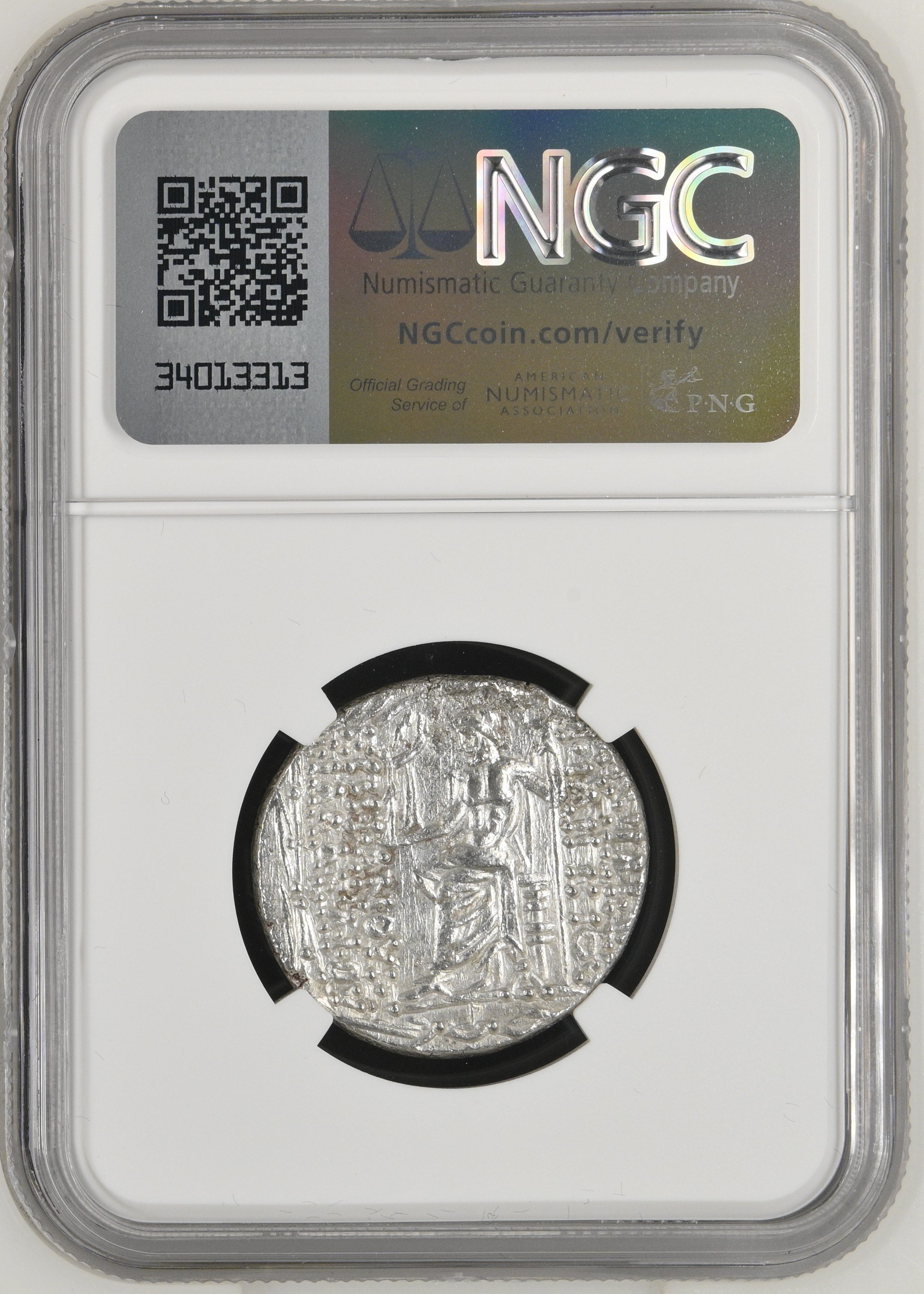 Image 1 of 4
Image 1 of 4

 Image 2 of 4
Image 2 of 4

 Image 3 of 4
Image 3 of 4

 Image 4 of 4
Image 4 of 4





Silver Didrachm from Taras in Calabria (about 2,250 years ago)
This silver didrachm comes from the Greek colony of Taras (modern Taranto) in Calabria, southern Italy. Minted between approximately 280-240 BCE, it represents the sophisticated artistic and economic traditions of Magna Graecia (Greater Greece), the network of Greek colonies established throughout southern Italy and Sicily. Taras was founded by Spartan colonists in the 8th century BCE and developed into one of the most prosperous Greek cities in the western Mediterranean.
Coin Description:
Front side: The obverse depicts a horseman, possibly a cavalry officer or athlete, representing Taras' military might and participation in equestrian competitions at Panhellenic games.
Back side: The reverse shows a figure (likely Taras himself, the mythical founder) riding a dolphin, the signature emblem of the city. In mythology, Taras was the son of Poseidon who was carried to shore by a dolphin.
Technical Details:
Silver composition (AR)
Didrachm denomination (a standard Greek silver coin equal to two drachms)
Weight: Approximately 7-8 grams
Size: Approximately 20-22mm in diameter
Grade: Ch AU (Choice About Uncirculated) - indicating minimal wear with most original luster
Strike Quality: 3/5 (average strike with moderate detail)
Surface Quality: 4/5 (excellent surface preservation with minimal issues)
Date of minting: Circa 280-240 BCE (Pyrrhic War period)
Historical Significance: This coin was minted during a tumultuous period when Greek cities in southern Italy, including Taras, sought King Pyrrhus of Epirus' help against Roman expansion. Despite Pyrrhus' initial victories (the costly "Pyrrhic victories"), Rome eventually prevailed, capturing Taras in 272 BCE. The horseman/dolphin-rider imagery reflects both the military concerns and maritime identity of this wealthy port city struggling to maintain independence against Rome's growing power.
This silver didrachm comes from the Greek colony of Taras (modern Taranto) in Calabria, southern Italy. Minted between approximately 280-240 BCE, it represents the sophisticated artistic and economic traditions of Magna Graecia (Greater Greece), the network of Greek colonies established throughout southern Italy and Sicily. Taras was founded by Spartan colonists in the 8th century BCE and developed into one of the most prosperous Greek cities in the western Mediterranean.
Coin Description:
Front side: The obverse depicts a horseman, possibly a cavalry officer or athlete, representing Taras' military might and participation in equestrian competitions at Panhellenic games.
Back side: The reverse shows a figure (likely Taras himself, the mythical founder) riding a dolphin, the signature emblem of the city. In mythology, Taras was the son of Poseidon who was carried to shore by a dolphin.
Technical Details:
Silver composition (AR)
Didrachm denomination (a standard Greek silver coin equal to two drachms)
Weight: Approximately 7-8 grams
Size: Approximately 20-22mm in diameter
Grade: Ch AU (Choice About Uncirculated) - indicating minimal wear with most original luster
Strike Quality: 3/5 (average strike with moderate detail)
Surface Quality: 4/5 (excellent surface preservation with minimal issues)
Date of minting: Circa 280-240 BCE (Pyrrhic War period)
Historical Significance: This coin was minted during a tumultuous period when Greek cities in southern Italy, including Taras, sought King Pyrrhus of Epirus' help against Roman expansion. Despite Pyrrhus' initial victories (the costly "Pyrrhic victories"), Rome eventually prevailed, capturing Taras in 272 BCE. The horseman/dolphin-rider imagery reflects both the military concerns and maritime identity of this wealthy port city struggling to maintain independence against Rome's growing power.
This silver didrachm comes from the Greek colony of Taras (modern Taranto) in Calabria, southern Italy. Minted between approximately 280-240 BCE, it represents the sophisticated artistic and economic traditions of Magna Graecia (Greater Greece), the network of Greek colonies established throughout southern Italy and Sicily. Taras was founded by Spartan colonists in the 8th century BCE and developed into one of the most prosperous Greek cities in the western Mediterranean.
Coin Description:
Front side: The obverse depicts a horseman, possibly a cavalry officer or athlete, representing Taras' military might and participation in equestrian competitions at Panhellenic games.
Back side: The reverse shows a figure (likely Taras himself, the mythical founder) riding a dolphin, the signature emblem of the city. In mythology, Taras was the son of Poseidon who was carried to shore by a dolphin.
Technical Details:
Silver composition (AR)
Didrachm denomination (a standard Greek silver coin equal to two drachms)
Weight: Approximately 7-8 grams
Size: Approximately 20-22mm in diameter
Grade: Ch AU (Choice About Uncirculated) - indicating minimal wear with most original luster
Strike Quality: 3/5 (average strike with moderate detail)
Surface Quality: 4/5 (excellent surface preservation with minimal issues)
Date of minting: Circa 280-240 BCE (Pyrrhic War period)
Historical Significance: This coin was minted during a tumultuous period when Greek cities in southern Italy, including Taras, sought King Pyrrhus of Epirus' help against Roman expansion. Despite Pyrrhus' initial victories (the costly "Pyrrhic victories"), Rome eventually prevailed, capturing Taras in 272 BCE. The horseman/dolphin-rider imagery reflects both the military concerns and maritime identity of this wealthy port city struggling to maintain independence against Rome's growing power.
Calabria[a] is a region in Southern Italy. It is a peninsula bordered by Basilicata to the north, the Ionian Sea to the east, the Strait of Messina to the southwest, which separates it from Sicily, and the Tyrrhenian Sea to the west. It has almost 2 million residents across a total area of 15,222 km2 (5,877 sq mi). Catanzaro is the region's capital.
Calabria is the birthplace of the name of Italy,[6] given to it by the Ancient Greeks who settled in this land starting from the 8th century BC. They established the first cities, mainly on the coast, as Greek colonies. During this period Calabria was the heart of Magna Graecia, home of key figures in history such as Pythagoras, Herodotus and Milo.
You Might Also Like













